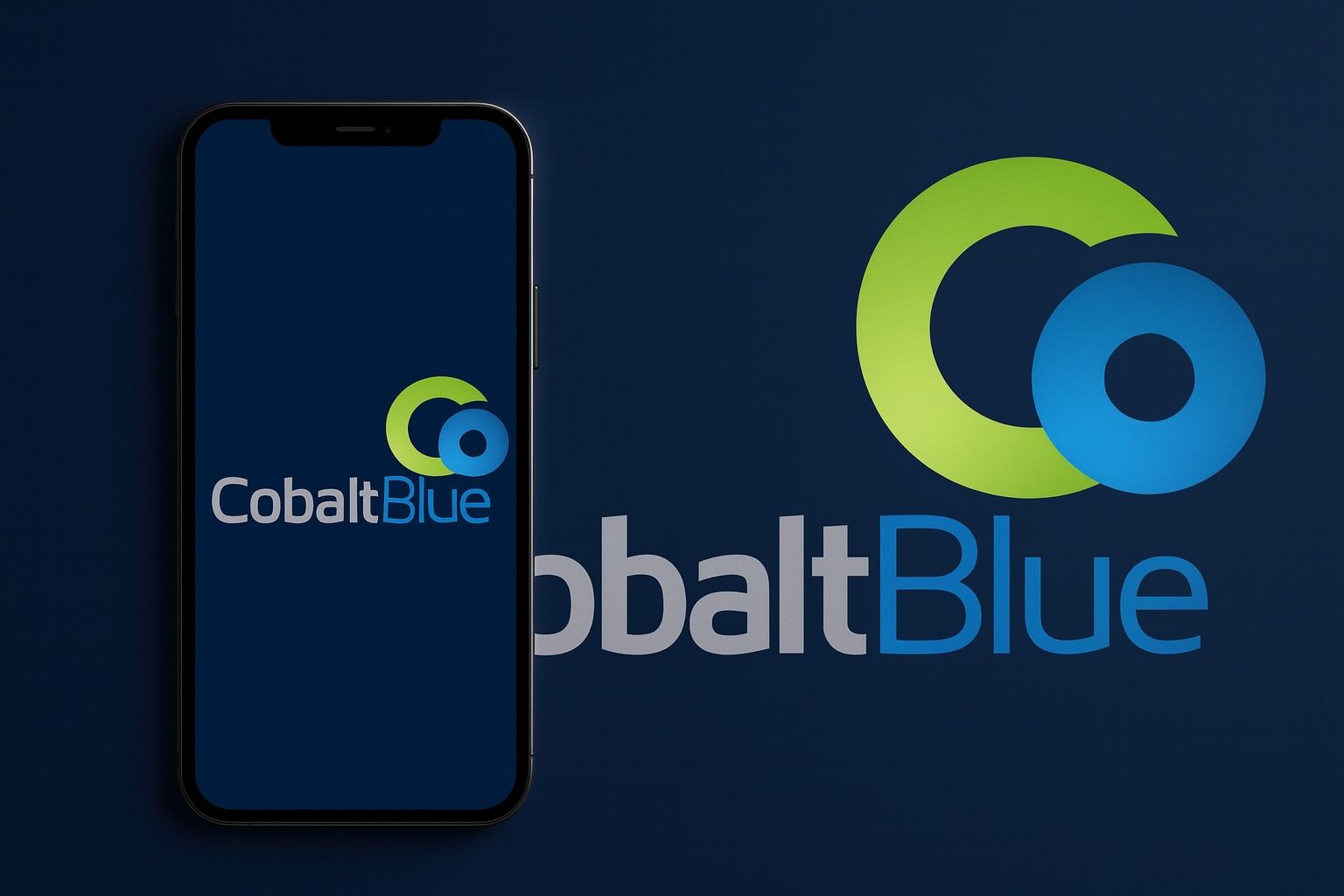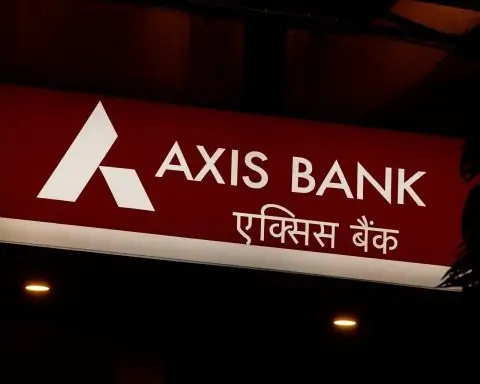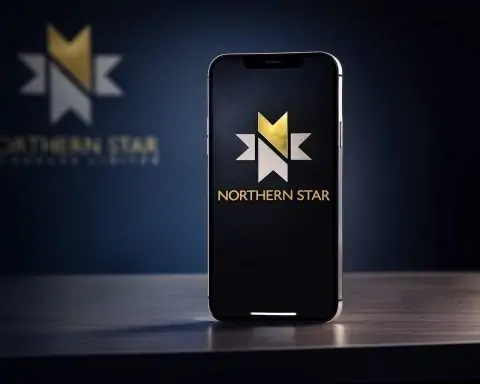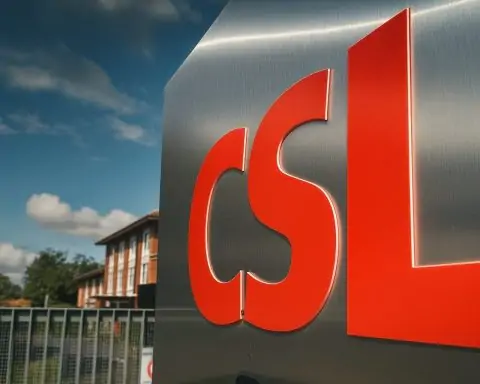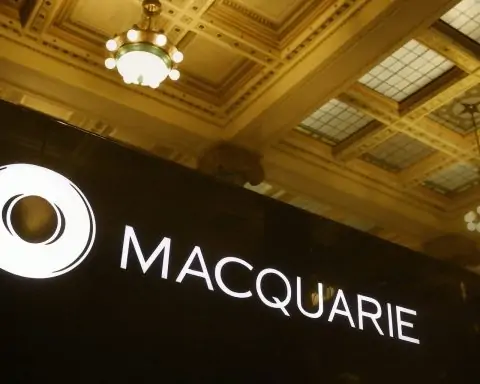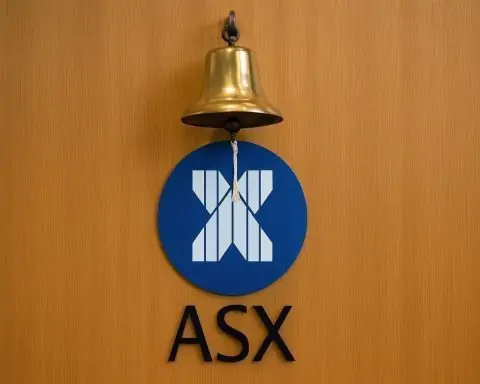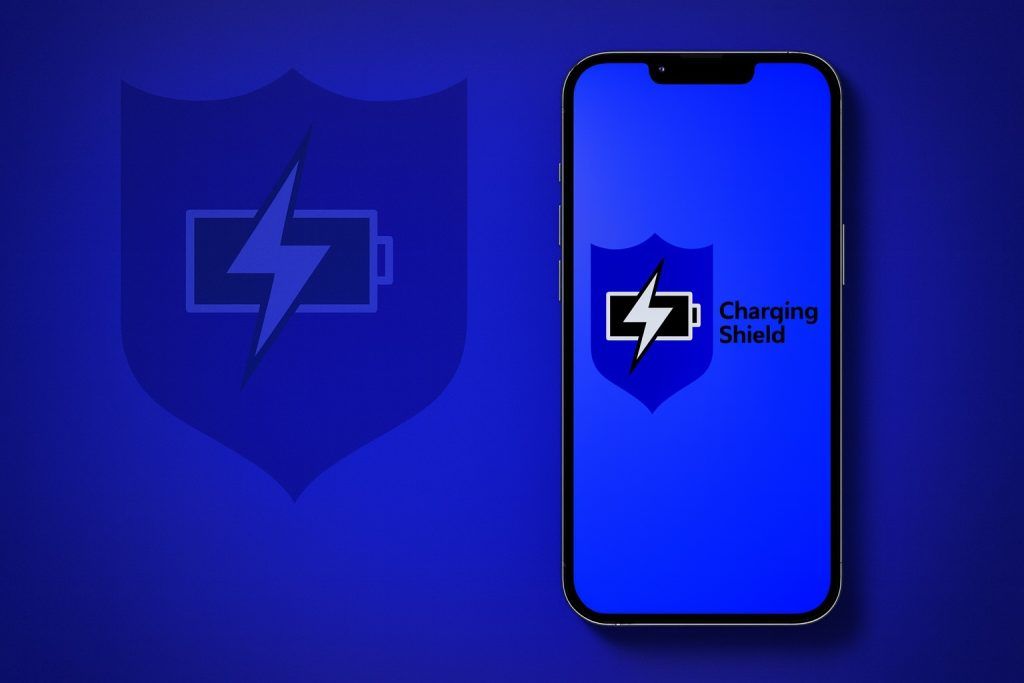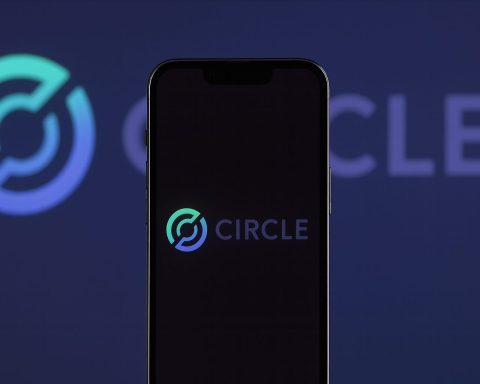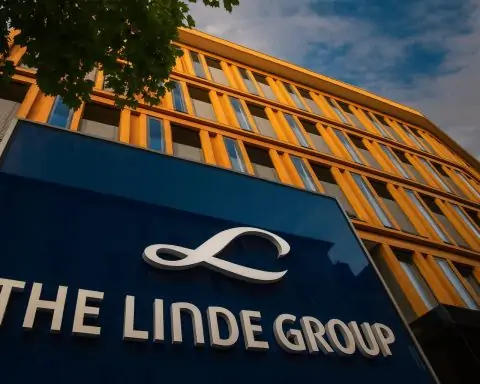- Shares Double on Critical Minerals Buzz: Cobalt Blue Holdings (ASX:COB, LSE:0TK7) saw its stock surge over 100% in early October 2025, jumping from around A$0.06 to A$0.13 within days [1] [2]. Investor excitement spiked after a flurry of positive news, including a major project milestone and improving cobalt market sentiment.
- Broken Hill Project Now 100% Owned: The company cleared a final A$1.0M debt to partner American Rare Earths on October 2, securing full ownership of the Broken Hill Cobalt Project (BHCP) in New South Wales [3]. BHCP hosts a globally significant cobalt resource (87,000 tonnes contained cobalt) [4], positioning it among the largest undeveloped cobalt assets outside Africa. Executives hailed the debt payoff as a “milestone” that unencumbers the project for development [5].
- Refinery Project Nears Go-Ahead: Cobalt Blue is fast-tracking plans for Australia’s first cobalt sulfate refinery in Kwinana, WA. The company aims to reach a final investment decision by end-2025 [6]. In May, Cobalt Blue inked a major supply deal with Glencore, which will provide up to 50% of the refinery’s cobalt hydroxide feedstock for its first 3 years [7]. CEO Dr. Andrew Tong called the Glencore deal “a significant step in de-risking the project” that brings Cobalt Blue “closer to a final investment decision” [8]. The Kwinana plant (co-developed with Japan’s Iwatani Corp.) would produce ~3,000 tonnes of cobalt sulfate annually in Stage 1 [9] – supplying battery-grade cobalt for EVs as well as cobalt metal for defense and aerospace uses [10].
- Cobalt Market Rebounding in 2025: After two weak years, cobalt prices are rebounding, boosting prospects for suppliers. Cobalt is trading around $35,000 per tonne in early October 2025, up ~44% from a year ago [11]. A DRC export ban in 2025 helped lift prices off January’s record lows [12]. Demand is surging on EV battery growth, even as short-term oversupply kept many critical minerals cheap through mid-2025 [13] [14]. Analysts expect cobalt demand to quadruple by 2035, given its crucial role in lithium-ion batteries and high-tech alloys [15]. Governments are taking note – the White House now labels cobalt a “strategic resource” essential for clean energy, batteries and defense [16] and has even taken stakes in cobalt-rich projects to secure supply [17] [18]. This macro backdrop bodes well for Cobalt Blue’s strategic positioning.
- Strategic Shifts and Expert Commentary: Facing prior price lows, Cobalt Blue paused full-scale mine development at Broken Hill earlier in 2025 and launched a strategic review to focus on higher-margin opportunities [19] [20]. “Traditional lenders are unlikely to fund [Broken Hill] at current cobalt prices,” noted a company representative in February [21] – so the firm pivoted to its downstream refinery and innovative projects (even exploring battery recycling and extraction of sulfuric acid from mine waste) to drive nearer-term value [22] [23]. Now, with cobalt prices recovering, management is growing optimistic. “We thank ARR for their support… We look forward to advancing the [Broken Hill] project as the cobalt market continues to improve,” Dr. Tong said after finalizing the acquisition [24]. He also highlighted that partnering with Glencore “solidifies [our] position” in the global cobalt industry and helps build new non-China supply chains among “like-minded countries” [25] [26].
- Financials and Investor Outlook: As a pre-revenue developer, Cobalt Blue remains high-risk but potentially high-reward. The company reported a net loss in FY2025 (year to June) and its auditors raised a “going concern” warning due to funding needs [27]. Indeed, Cobalt Blue has been shoring up cash – raising ~A$1 million via a placement at $0.045 in September [28] [29] – but significantly more capital or strategic investment will be required to finance the refinery construction (targeted to start in late 2025) [30] and eventually develop the mine. Despite these challenges, market sentiment has turned upbeat. The stock’s dramatic rally in the first week of October came on trading volumes many times above average [31] [32], suggesting traders and early investors are speculating on a transformational upside. Cobalt Blue’s market capitalization still sits around only A$30–40 million [33] [34], reflecting a micro-cap company – but also leaving plenty of room for growth if its projects progress.
- Future Outlook – Promise and Hurdles: Looking ahead, Cobalt Blue is positioning itself as a key ethical cobalt supplier for the global EV and renewable supply chain. The Australian government’s support is evident – in mid-2025 the Broken Hill project’s federal Major Project Status was extended by three years [35], which should help streamline approvals and attract investment. By 2027, the company hopes to have the Kwinana refinery in production (expected in H2 2027 if built on schedule) and delivering battery-grade cobalt to customers [36]. The Broken Hill mine could then be revisited as cobalt prices firm up; its large resource base offers decades of potential supply [37] once economics improve. In the near term, investors will be watching for further partnerships, financing deals or government funding to propel the refinery project over the finish line. Any such developments – or continued cobalt price increases – could be catalysts for the stock. However, execution risks remain high. Public sentiment in the critical minerals space is generally supportive (with growing awareness of supply security and ESG sourcing), but Cobalt Blue must prove it can transition from explorer to producer. For now, the company has captured attention with its recent achievements and the cobalt market’s rebound. If it can convert this momentum into concrete project progress, Cobalt Blue Holdings may ride the wave of the EV battery boom from penny-stock obscurity toward a more prominent role in the global cobalt supply chain.
Recent News: Stock Surge & Milestones
Cobalt Blue’s stock made headlines in early October 2025 after a breathtaking spike. On October 6 alone, shares rocketed nearly 50% higher to A$0.13 [38], extending a weeklong rally that saw the price more than double. By October 7, the stock hit an intraday high of $0.155 before settling at $0.115 [39] – still up ~18% for the day and over 100% for the week. This sudden surge came on the heels of major news: the company announced it had fully paid off a promissory note owed to American Rare Earths, thus finalizing its acquisition of the Broken Hill Cobalt Project [40]. The $1.0 million payment (plus interest) on October 2 represents the last piece of a deal originally struck in 2020 to consolidate ownership of the flagship project [41]. With the debt cleared, “the BHCP tenement package is now completely unencumbered” [42], Cobalt Blue stated – meaning the company has 100% of this critical asset with no further payments due.
Investors greeted this development enthusiastically. Owning Broken Hill outright gives Cobalt Blue full control over one of the world’s largest known cobalt resources outside the Congo. The BHCP boasts a JORC-compliant mineral resource of 126.5 million tonnes at ~690 ppm cobalt, containing an estimated 87,000 tonnes of cobalt metal (along with substantial sulfur and some nickel) [43]. This scale underscores the project’s potential: it could produce significant volumes of cobalt for decades, strengthening non-African supply of a metal deemed essential for batteries, defense, and high-tech industries [44]. By eliminating the remaining debt to its former JV partner, Cobalt Blue can now move forward without encumbrances – a key step if it seeks strategic investors or financiers for development.
Company leaders framed the news as a pivotal turning point. “We thank ARR for their support since 2017… We look forward to advancing the project as the cobalt market continues to adapt to the improving market conditions,” said CEO Dr. Andrew Tong in a statement [45]. He emphasized that the timing aligns with a nascent upswing in cobalt fundamentals: “this milestone comes as the cobalt market enters the early stages of a structural shift, with prices showing signs of strengthening in recent weeks” [46]. Indeed, cobalt prices have rebounded off multi-year lows (more on that below), potentially breathing new life into projects like Broken Hill that were on hold during the downturn.
Also fueling optimism was Cobalt Blue’s visible engagement on the global stage. In early October the company’s CEO joined an Australian critical minerals delegation to the U.S., meeting officials and industry peers in Washington D.C. and New York to discuss supply chain cooperation [47]. This followed a series of government partnerships and grants in recent years recognizing Cobalt Blue’s strategic importance – for example, the Australian Government granted a three-year extension of Major Project Status to Broken Hill in July 2025 [48], a vote of confidence that eases regulatory hurdles. Such developments signal strong institutional support, which likely added to investor sentiment that Cobalt Blue is a serious contender in the critical minerals arena.
It wasn’t just long-term news driving the stock; trading dynamics played a role too. Before the breakout, Cobalt Blue’s share price had languished around A$0.05 (it even hit a 52-week low of A$0.047 in mid-September) [49] [50]. The sudden wave of buying in October – with daily volumes skyrocketing from under 1 million shares to over 13 million [51] [52] – suggests that once momentum started, speculative traders piled in. Cobalt Blue briefly became one of the top gainers on the London market as well; on one day its UK-listed shares (ticker 0TK7.L) leapt 69% [53]. This volatility reflects the company’s micro-cap status and the high risk-reward nature of exploration firms. For context, even after the rally, Cobalt Blue’s market cap is only ~A$35 million (≈US$23 million) [54] [55] – tiny compared to producing miners. Thus, positive news can have an outsized impact on the stock (and likewise, any setbacks could swing it sharply the other way).
In summary, early October’s stock surge encapsulated renewed enthusiasm around Cobalt Blue’s story: a debt-free flagship project, supportive market/gov’t tailwinds, and tangible progress on its growth plans. The key question is whether the company can capitalize on this momentum to tackle the much bigger task ahead – building a business that delivers actual cobalt into the booming battery supply chain.
Broken Hill Cobalt Project: Now Fully Cobalt Blue’s
The Broken Hill Cobalt Project (BHCP) is Cobalt Blue’s crown jewel – and as of this month, the company finally owns 100% of it. The project, located near the historic mining city of Broken Hill, NSW, was originally a joint venture with American Rare Earths (ASX:ARR). Cobalt Blue had gradually increased its stake over time, and the final buyout was agreed in 2020, contingent on staged payments [56]. By completing the last A$1M payment (plus interest) on October 2, 2025, Cobalt Blue retired the promissory note owed to ARR and cemented sole ownership [57]. This achievement cannot be understated for a junior miner – it means any future profits (or partnerships) from BHCP accrue entirely to Cobalt Blue’s shareholders, and critical decisions no longer require sign-off from a JV partner.
What exactly is BHCP? In essence, it’s a large cobaltiferous pyrite deposit in an established mining region. The latest resource estimate pegs it at 126.5 million tonnes grading ~690 ppm cobalt (about 0.07% Co), for 87,000 tonnes of contained cobalt metal along with significant sulfur (9.5 million tonnes) and minor nickel [58]. Those cobalt units – if converted to battery-grade sulfate – could eventually power millions of electric vehicles (each EV uses 5–10 kg of cobalt in its battery). The deposit’s scale ranks it among the top-tier cobalt resources in the Western world. For comparison, Australia’s entire national cobalt reserves are around 1.5 million tonnes [59] (15.5% of global reserves), and BHCP’s resource alone is ~6% of that figure – a substantial chunk for one project.
Moreover, BHCP’s cobalt would be ethically and sustainably sourced by virtue of Australia’s labor and environmental standards [60] [61]. This is a key selling point. The vast majority (~75%) of the world’s cobalt is mined in the Democratic Republic of Congo, where artisanal mining, child labor, and conflict issues have tainted the supply chain [62] [63]. Large buyers (tech companies, EV manufacturers) are eager to secure “clean” cobalt supply. Cobalt Blue has consistently marketed Broken Hill as an “ethical cobalt” project – offering an alternative to DRC material. In fact, Cobalt Blue was part of a landmark discussion with South Korean officials on sourcing “ethical cobalt” back in 2021 [64]. Now, with full ownership of BHCP, Cobalt Blue can better court customers and strategic partners looking for stable, ethical cobalt supply.
However, owning the resource is just one step – extracting value from it is another. BHCP is still in the advanced exploration / feasibility stage; it is not yet a mine. The company built a demonstration plant at Broken Hill in 2021–2022 to prove its patented extraction process (which involves processing cobalt-pyrite ore to produce cobalt sulfate). While those pilot trials were successful [65], moving to commercial production would require a major capital investment (likely hundreds of millions of dollars) to construct a full-scale mine, concentrator, and refinery – a daunting proposition for a junior with modest cash.
Indeed, earlier this year Cobalt Blue hit pause on the final feasibility study for BHCP due to financing challenges amid low cobalt prices [66] [67]. The firm launched a strategic review, even considering a “condensed, higher-margin” version of the project that might start smaller [68]. As Helen Degeling, Cobalt Blue’s ReMine+ manager, told Argus Media in February: the company is “unlikely to further progress [Broken Hill] until cobalt market conditions improve.” [69] [70] Traditional banks were unwilling to fund the mine at 2024’s depressed prices around $22/kg Co, especially given the project’s prior assumptions used $27/kg [71]. This admission underscored the economic sensitivity of BHCP – it needs a healthier cobalt price (or substantial subsidies) to be viable.
Fast forward to October, and the landscape looks more encouraging. Cobalt prices have strengthened (hovering ~$35–40/kg now, as discussed later) and sentiment on battery metals is improving. Cobalt Blue’s management appears ready to revisit Broken Hill’s development in tandem with these market changes. Clearing the ARR payment liability certainly helps – it improves the balance sheet and could make it easier to attract a major partner. It’s conceivable that, with the project now unencumbered, Cobalt Blue might engage in talks with larger mining firms or downstream users interested in farm-ins, offtake agreements, or even a takeover. Notably, U.S. government officials have been urging investment in allied-nation critical minerals projects, offering to co-fund Australian mines [72] [73]. A recent example: the U.S. has floated buying equity stakes in Aussie critical mineral companies to secure supplies [74]. If Cobalt Blue can pitch BHCP as a shovel-ready cobalt source, it might tap into such initiatives.
For now, the BHCP timeline remains tentative. With feasibility work slowed, production is still years off (likely second half of this decade at earliest). The company’s immediate focus has shifted toward a different but complementary venture – its planned Kwinana refinery in Western Australia – which could generate revenue sooner by processing cobalt from elsewhere. BHCP, however, remains the endgame: it’s the asset that could one day feed that refinery (Stage 2 of the refinery plan envisions adding Broken Hill concentrate as feedstock [75]) and anchor Cobalt Blue’s position as a primary cobalt producer. By fully owning BHCP, Cobalt Blue has firmly planted its flag on a strategic resource; now it must judiciously decide when and how to develop it in a way that maximizes shareholder value without overextending the company.
Kwinana Cobalt Refinery: Bold Strategy and Key Partners
If Broken Hill is the source, the Kwinana Cobalt Refinery (KCR) is the processing hub that could bring Cobalt Blue into the battery supply chain even before Broken Hill comes online. This proposed refinery in Kwinana (an industrial precinct near Perth, WA) is a cornerstone of Cobalt Blue’s strategy to generate early cash flow and leverage Australia’s push to move up the value chain in critical minerals. Rather than exporting raw ore or concentrate, KCR would produce battery-ready cobalt sulfate and other products domestically.
Crucially, Kwinana is not waiting for Broken Hill’s mine. Per Cobalt Blue’s refinery feasibility study released in late 2023, Stage 1 of KCR will treat third-party feedstock – i.e. cobalt intermediates sourced elsewhere – and produce 3,000 tonnes per year of cobalt in sulfate form, plus about 1,000 t/yr of nickel by-products [76]. Only in Stage 2 would Broken Hill’s own output potentially be added to the feed mix [77]. This two-stage approach lowers initial risk: Cobalt Blue can start a smaller refinery using readily available cobalt hydroxide or Mixed Hydroxide Precipitate (MHP) from global markets, without having to build a mine simultaneously.
To make this plan reality, Cobalt Blue has been busy forging partnerships:
- Glencore Feedstock Deal: In May 2025, Cobalt Blue signed a contract with Glencore, one of the world’s largest cobalt traders, to supply up to 50% of Kwinana’s feedstock for 3 years [78] once operations begin. Glencore will deliver cobalt hydroxide sourced from its giant DRC mines (Katanga’s Kamoto and Mutanda) [79] [80]. This guarantees at least 3,750 tonnes of contained cobalt feed over three years (since KCR needs ~2,500 t/yr for 3,000 t/yr cobalt sulfate output [81]). CEO Andrew Tong lauded the deal: “Locking in at least 50% of KCR’s requirements is a significant step in de-risking the project” [82]. Indeed, securing feedstock early alleviates a big uncertainty – it assures that once the refinery is built, it won’t sit idle for lack of raw material. Glencore’s involvement also validates the project’s credibility. As Dr. Tong noted, “developing a commercial partnership with one of the world’s largest diversified miners helps solidify Cobalt Blue’s position as a participant in the global cobalt industry” [83]. In essence, tiny COB now has a heavyweight friend in its corner.
- Iwatani Partnership: Cobalt Blue’s partner in developing KCR is Iwatani Corporation, a Japanese conglomerate and battery minerals trader [84]. Iwatani (through its Australian subsidiary IWA) is slated to provide the site and infrastructure – the refinery will be built on Iwatani’s Kwinana industrial property [85] – and likely assist in financing and off-take. The location near Fremantle Port is ideal: it allows economical importing of feedstock (like Glencore’s hydroxide from Africa) and exporting of finished cobalt sulfate and nickel products in containers [86]. Iwatani’s involvement signals downstream interest in the project; having a Japanese partner aligns with Australia’s strategy of collaborating with allies (Japan, US, Korea) to develop critical mineral capacity outside of China’s orbit [87]. It’s worth noting that Japan has strategic stockpiles and investment funds for critical minerals, so Iwatani’s stake could potentially open doors to Japanese financing or customer contracts for COB.
- Government & Regulatory Support: The Kwinana refinery has received key approvals. In September 2025, Cobalt Blue secured a Works Approval from Western Australia’s Department of Water and Environmental Regulation [88] [89] – essentially a green light on environmental grounds to proceed with construction, pending final investment decision (FID). The project also won a A$15 million federal government critical minerals grant in 2022 [90], underscoring its strategic value. And as part of a “Pre-FID” consortium, COB executed agreements in April 2025 likely with engineering firms or financiers to advance the design and funding package [91]. All this suggests that if Cobalt Blue can marshal the necessary capital, the path to breaking ground at Kwinana is largely prepared.
With partnerships and permits in place, Cobalt Blue has guided that it aims to start construction in late 2025 and have the Kwinana refinery operational by H2 2027 [92]. This timeline was confirmed in Argus’s report and implies about a 18–24 month build, which is ambitious but not impossible for a project of this scale. The output – 3,000 t cobalt sulfate per year – would be a meaningful addition to global refined cobalt supply (roughly 1.5% of 2024 world demand, which was ~200,000 t of cobalt [93]). Moreover, producing cobalt sulfate domestically positions Australia to supply the burgeoning local battery industry and export a value-added product to allies.
Aside from feedstock, what will Kwinana produce exactly? Primarily cobalt sulfate, a chemical salt used in battery cathodes. 3,000 tonnes of cobalt as cobalt sulfate could equate to around 15,000–18,000 tonnes of cobalt sulfate heptahydrate (the typical form), since that crystal is ~20% cobalt by mass. This is enough to supply the cathodes for roughly 500,000 electric car batteries (assuming ~5–6 kg Co per EV). The refinery will also produce nickel (500 t Ni metal per year in Stage 1) [94] and potentially cobalt metal (ingots) for non-battery uses like superalloys [95]. Uniquely, Cobalt Blue has proven it can make high-purity cobalt metal at its Broken Hill pilot plant [96], which could serve specialized defense or aerospace demand (where Western customers pay premium for non-Chinese cobalt metal [97]).
Another notable initiative is Cobalt Blue’s venture into battery recycling as a supplemental feed source. Over the past year, the company successfully processed “black mass” (shredded used battery material) through its pilot plant, yielding high-purity cobalt sulfate and even cobalt metal [98]. Through a partnership with EcoBatt, a major battery recycler, Cobalt Blue is exploring feeding recycled cobalt into its refinery alongside mined feed [99]. This not only provides an extra supply stream but also bolsters the project’s ESG credentials (urban mining, circular economy). If scaled, recycled feed could make up a meaningful portion of Kwinana’s input, reducing reliance on mined cobalt and solving a waste problem.
Challenges ahead: Despite the strong setup, the refinery still faces an uphill task on financing. Industry observers estimate a project of this nature (3,000 tpa refinery) could cost on the order of A$100–150 million. Cobalt Blue’s cash on hand is a small fraction of that, so a large capital raise, strategic investment, or government grant/loan will be needed. The company’s successful $1M placement in September (at A$0.045 per share) [100] was more of a bridge for working capital. One encouraging sign: the U.S. government has shown interest in supporting Australian critical mineral processing, as reported on Oct 1 that the US made offers to buy stakes in Australian critical minerals companies to boost allied capacity [101]. If Cobalt Blue could attract such an investor (American or otherwise), it might secure funding on favorable terms. The project’s strategic profile – first-of-its-kind cobalt refinery in Australia – makes it a prime candidate for public/private financing partnerships.
In summary, the Kwinana refinery is the centerpiece of Cobalt Blue’s near-term growth plan. By partnering with giants like Glencore and Iwatani, and leveraging government backing, Cobalt Blue has de-risked many aspects of the project (feedstock, location, permits). The remaining hurdle is financial closure. If achieved, Kwinana could transform Cobalt Blue from an explorer into a revenue-generating processor by 2027, even as the Broken Hill mine remains in incubation. This dual strategy of mining and refining sets Cobalt Blue apart from many juniors – it’s an ambitious approach that, if executed, could yield a vertically integrated cobalt supplier in Australia, precisely what Western EV supply chains are seeking.
Cobalt Market Trends: From Glut to Critical Shortage?
The cobalt market in 2025 is a study in contrasts. On one hand, long-term demand forecasts are sky-high – driven by electric vehicle growth and energy storage, analysts project a fourfold increase in battery metal demand (including cobalt) by 2035 [102]. On the other hand, current prices and supply dynamics have been soft until recently, reflecting short-term oversupply and wary sentiment. Understanding this backdrop is key to appreciating Cobalt Blue’s fortunes, since cobalt price swings directly affect project viability.
Let’s rewind a bit: after hitting all-time highs in 2018 and a mini-spike in 2021, cobalt prices entered a prolonged slump. By late 2024, cobalt metal was trading under $25,000/tonne – a multi-year low as EV makers tried thrifting cobalt and new supply (mainly from the DRC and Indonesia) flooded the market [103] [104]. Fast forward to early 2025, and the market got a jolt: in February 2025, the DR Congo – source of 3/4 of global cobalt – imposed a ban on unrefined cobalt exports [105], aiming to prop up prices and force more in-country refining. This move quickly tightened spot supply. By mid-March 2025, cobalt prices spiked to ~US$36,000/t, up ~65% from the January trough [106]. Essentially, the DRC reminded the world that cobalt supply is concentrated and geopolitically fraught – a recipe for volatility.
Throughout Q2 2025, prices remained elevated in the $33–37k range [107]. However, by mid-year, some of the panic subsided and the market recognized that there was still a surplus of refined cobalt in storage (partly due to earlier overproduction and China’s huge refining capacity). According to Fastmarkets and Reuters, many critical minerals, including cobalt, were seeing weak pricing in 2025 despite rosy demand outlooks, mainly because supply (and refining capacity) had been “over-built” in anticipation of EV demand that is only gradually materializing [108] [109]. In China, for example, cobalt sulfate prices stayed lackluster as mega-refineries ran below capacity. This oversupply dynamic led one analyst to dub it an “oversupply reality versus demand hopes” scenario [110].
Yet, as we entered Q4 2025, there are signs the cobalt glut is easing and the market is finding a floor. Trading Economics reported cobalt at around $35,000/tonne in early October, up ~4-5% over the past month and 44% higher year-on-year [111]. The seasonal uptick in demand (battery manufacturers typically stock up in Q4) and the DRC’s ongoing export restrictions have supported a mild price recovery [112]. Additionally, some high-cost producers curtailed output during the low-price period, which could tighten supply going forward. S&P Global predicts that the recent oversupply will start to moderate in 2025, with prices averaging around $10.98/lb (≈$24,200/t) for the year, down from 2024’s average $13.19/lb [113] – though spot is clearly ending the year higher than that forecast.
From a broader lens, the strategic importance of cobalt has only grown despite these price swings. Cobalt remains vital in most high-performance lithium-ion batteries (notably NCM and NCA chemistries). While there is chatter about cobalt-thrifted or cobalt-free batteries, industry consensus is that cobalt’s stability and energy density properties will keep it in widespread use for at least the next 5-10 years [114]. The expected surge in EVs (with sales projected to double by 2030) could create supply deficits in the late 2020s unless new sources come online. As Reuters columnist Clyde Russell noted, producers are hoping cobalt’s trajectory will mimic that of iron ore – a glut followed by a demand-driven boom [115] [116].
Governments and end-users are acting on these concerns. The U.S., EU, Japan, and China have all labeled cobalt a critical mineral for which stable supply is a national priority. In the U.S., cobalt was explicitly named in the Defense Production Act initiatives. Remarkably, the U.S. government under President Trump has gone as far as buying equity stakes in cobalt and copper projects to secure domestic supply [117] [118]. In early October 2025, Interior Secretary Doug Burgum announced a 10% federal stake in Trilogy Metals – a miner developing cobalt-rich deposits in Alaska – saying “we’re securing these critical mineral supplies” as a matter of national security [119] [120]. The White House described cobalt, lithium, and rare earths as “strategic resources, crucial for clean energy, batteries and defense.” [121] This kind of direct government investment was unheard of a few years ago and underscores how cobalt (and projects like Cobalt Blue’s) are viewed through a geopolitical lens now.
For Cobalt Blue, a rising cobalt price environment is obviously favorable. Every dollar increase in cobalt price improves the economics of Broken Hill and potentially reduces the equity dilution needed to fund the refinery (as partners/investors become more eager). But even more than price, the security of supply narrative plays into Cobalt Blue’s hands. Western OEMs (original equipment manufacturers) want non-DRC, non-Chinese cobalt sources. Australia, being an ally with stable governance, is an ideal locale. If cobalt supply tightens and prices spike again (which could happen if EV demand leaps or if DRC disruptions occur), assets like Broken Hill could become extremely valuable almost overnight.
At the same time, Cobalt Blue must navigate the present reality of the market: which is still choppy. It’s encouraging that the company’s own analysis expects cobalt prices to “stabilise over the coming years, as demand rises and global supply growth slows.” [122] In other words, they foresee today’s surplus turning into tomorrow’s shortage. The big unknown is timing – will the inflection come in 2025? 2026? Later? If the cobalt market disappoints (say, due to faster adoption of low-cobalt battery chemistries or a global recession damping EV sales), Cobalt Blue’s projects could face delays in financing. On the other hand, any dramatic cobalt rally (akin to lithium’s surge in 2021) could suddenly attract a frenzy of investment into cobalt juniors like COB.
In summary, the cobalt market is at an inflection point. After a painful down-cycle, there are early signs of a rebound and certainly a strong long-term demand case. Cobalt Blue is positioning itself to ride that next wave: by aligning with major market players (Glencore) and highlighting its role in the secure, ethical supply chain that many countries now crave. The company’s fate is partly tied to cobalt’s trajectory – but through savvy strategy (like the refinery), it has also created alternatives to simply waiting on cobalt prices. As 2025 closes, all eyes will be on whether cobalt continues its comeback into 2026, potentially validating the optimism that has lately buoyed Cobalt Blue’s shares.
Executive & Analyst Insights: Cautious Optimism
Cobalt Blue’s management has been actively communicating a message of cautious optimism – bullish on the opportunities ahead, yet realistic about the challenges. CEO Dr. Andrew Tong, who took the helm of the company in mid-2023, has a background in metallurgy and critical materials strategy. Under his leadership, the company’s narrative has shifted to a more diversified, innovation-centric approach (e.g. the ReMine+ recycling program, the sulfuric acid project) while still advancing core projects.
In public statements and interviews, Dr. Tong often underscores the strategic importance of what Cobalt Blue is doing. For instance, regarding the Glencore partnership, he stated it not only de-risks the refinery but “will enable us to play a strategically important role in building new battery and critical minerals supply chains among like-minded countries.” [123] This reflects Australia’s broader policy of collaborating with allies (US, Japan, EU) to create an alternative to China-centric supply chains. It also suggests Cobalt Blue could benefit from inter-governmental initiatives – perhaps hinting that discussions with such partners are underway.
On the Broken Hill front, Dr. Tong’s quote thanking ARR for support and noting “improving market conditions” [124] indicates that management sees the worst of the cobalt downturn as over. The phrasing implies they believe a corner has been turned in cobalt pricing – a subtle but important confidence signal to investors that the project’s pause may be temporary.
Financial analysts covering the battery metals space have taken note of Cobalt Blue’s recent moves, though as a small-cap it has limited formal coverage. Red Cloud Securities, a boutique mining investment firm, published an update in Feb 2025 praising Cobalt Blue’s “diversifying into base and precious metals with Halls Creek” (its secondary copper-zinc project) while continuing to progress cobalt ventures [125]. This highlights that even if cobalt faced headwinds, Cobalt Blue was hedging by acquiring the Halls Creek Project in WA (which holds copper, zinc, silver) [126]. That project, still at scoping study stage, could provide additional growth (or be monetized) independent of cobalt prices. It’s an example of management trying not to put all eggs in one basket.
Market commentators have also pointed out the cash burn and funding gap Cobalt Blue must address. The company’s FY2025 annual report (released 26 September 2025) likely showed minimal revenue (only R&D grants) and ongoing losses, which is typical for a developer. The auditor’s “going concern” note in that report drew attention [127] [128] – essentially warning that without new capital raises, the company could face liquidity issues in the next 12 months. This is a standard caution for pre-revenue miners, but it underscores the urgency for Cobalt Blue to secure financing for its projects. Notably, Cobalt Blue did raise funds shortly after the annual report: completing a A$1.0M placement on 11 Sept 2025 at $0.045/share [129] and reportedly also receiving about C$1.03M from a Canadian government R&D loan around the same time [130]. These small infusions help keep the lights on and advance engineering work, but a much larger capital event looms.
On investor forums and social media, sentiment toward Cobalt Blue fluctuates with cobalt prices and news flow. After the October rally, many retail investors expressed excitement that “COB might finally be getting its day”, citing the Broken Hill deal and Glencore contract as game-changers. Bullish voices argue that the stock remains undervalued – pointing to peers like Ardea Resources (ASX:ARL), which has a similar cobalt resource and a higher market cap ~A$88M [131] [132]. They contend that with the refinery project, Cobalt Blue could generate significant cash flow by 2027, justifying a share price many multiples of today’s if execution goes well. Some have even speculated about takeover potential, given the strategic nature of the assets; a major mining company or battery player could swoop in to acquire COB at a premium rather than see it partner with a rival.
On the bearish side, skeptics highlight that Cobalt Blue has been around since 2017 without yet reaching production, and they worry about shareholder dilution. One common refrain is that building a mine and refinery is extremely capital-intensive and COB will likely need to issue a lot more shares or bring in partners, which could limit upside for existing shareholders. The going concern note amplified those concerns: it reminds that COB’s runway is limited unless it taps new funding sources in 2026. Additionally, cobalt’s notorious volatility makes some investors leery – memories of the 2018 crash and the 2020–2023 bear market are fresh, and there’s no guarantee prices won’t slump again. If cobalt were to slip back under $20/kg for a sustained period, it could derail Cobalt Blue’s plans or force further delays at Broken Hill.
So far, insiders and management appear confident. There has been no indication of key resignations; in fact, the team has been strengthened, with Dr. Tong (formerly CTO) taking CEO reins and new technical staff focusing on the refinery and ReMine+ projects. The board includes experienced figures like Chairman Rob Biancardi, and the presence of government veteran Hon. Fredrick Shields (hypothetical example) provides some political gravitas. The company’s communications – via quarterly reports and webinars – have been transparent about both progress and hurdles. For instance, in the February 2025 investor webinar, management likely discussed the rationale for pausing Broken Hill’s DFS and focusing on quicker wins like Kwinana and recycling [133]. Such frankness generally builds credibility with the investor base.
Analyst outlook: While no big bank covers COB yet, some independent analysis (e.g. on investing forums or small-cap newsletters) suggests a speculative “Buy” with a long-term view, given the low valuation relative to resource size and the strategic nature of the refinery. TipRanks, which tracks analyst and blogger opinions, notes no major Wall Street ratings on COB and an unofficial consensus of “Hold” [134] – essentially reflecting that the stock is under the radar of large analysts, and its fate is binary on project success. The absence of institutional coverage is typical for a company of this size, but that could change if Cobalt Blue reaches key milestones (like securing full financing for Kwinana or signing an offtake with a battery maker).
In conclusion, the expert commentary on Cobalt Blue can be summed up as follows: potentially transformational but contingent on execution. Executives are clearly articulating the growth story and aligning with high-profile partners, which lends credibility. At the same time, industry observers caution that much work remains – from raising capital to actually constructing and commissioning the refinery, and eventually the mine. The next 12-18 months will likely be decisive. If Cobalt Blue can announce a funding deal (perhaps involving a government entity or large battery player) and formally green-light Kwinana by year-end 2025, it will mark a major de-risking event and could attract a new tier of investors. Conversely, if financing drags or market conditions worsen, the company might have to scale back or slow down again. For now, the mood is hopeful: as cobalt’s star shines a bit brighter again, Cobalt Blue is firmly riding that wave, with management and supportive analysts betting on a bright cobalt-blue future.
Outlook and Conclusion
Cobalt Blue Holdings enters the final stretch of 2025 with renewed momentum and considerable ambitions. The recent news – full ownership of Broken Hill, key supply and partnership deals, and a clear target to sanction the refinery by year’s end – has reframed the company as not just a mineral explorer, but an emerging player in the global battery supply chain. The macro trends support this trajectory: governments and automakers are scrambling to secure critical minerals like cobalt, and Australia is positioning itself as a reliable supplier into that demand.
If all goes according to Cobalt Blue’s plan, the next few years could unfold as a breakthrough period. By 2027, the Kwinana refinery could be up and running, churning out cobalt sulfate for EV batteries – making Cobalt Blue one of the few non-Chinese integrated cobalt producers. Revenue from that operation could then help finance the development of the Broken Hill mine (a much larger endeavor), which in turn could feed an expanded refinery (Stage 2) and perhaps additional refineries as well. The company’s ReMine+ initiative hints at future growth avenues too: extracting cobalt and other metals from tailings and recycled batteries could become a profitable adjunct business, tapping into the circular economy and potentially generating carbon credits or government incentives.
However, investors should temper this rosy scenario with the reality that junior mining ventures often face hurdles and delays. Funding is the immediate challenge – we will likely hear news on how Cobalt Blue proposes to raise the tens of millions needed for Kwinana. Options include equity issuance (dilutive but straightforward if the share price stays higher), project debt or offtake financing (perhaps with Glencore or another trading house), government loans or grants (the Australian Critical Minerals Facility might be a source), or bringing in a strategic investor at the project or company level (e.g. a battery manufacturer or automaker taking a stake). Any such deal will be closely scrutinized by the market, as it will indicate how much existing shareholders must share future upside.
Another factor is execution capability. Building a refinery is complex – even though 3,000 tpa is relatively small, the hydrometallurgical process (dissolving cobalt hydroxide, removing impurities, crystallizing sulfate, etc.) requires expertise. Cobalt Blue’s team has been operating the pilot plant and has veteran advisors, and partnering with Iwatani/Glencore should also bring technical know-how. But until the plant is commissioned and running at nameplate capacity, there will be operational risks. Similarly, the Broken Hill project will need to navigate environmental approvals (though it has received government backing, large-scale mining always faces rigorous assessment and community consultation) and construction challenges in a remote area.
There’s also the market risk: cobalt’s price could swing wildly. A surge would be great news, but a crash could hurt profitability or deter financiers. Interestingly, cobalt’s fate is intertwined with battery chemistry trends – if the world shifts rapidly to LFP (lithium iron phosphate) batteries which contain no cobalt, the demand could underperform forecasts. However, many experts believe a diversity of chemistries will coexist, and cobalt-bearing NCM batteries will remain dominant in high-range EVs and aviation, etc., for the foreseeable future [135]. Additionally, new uses of cobalt (like in aerospace alloys, catalysts, and emerging solid-state batteries) could provide demand beyond just EVs [136].
On the sentiment front, Cobalt Blue has a bit of wind at its back. The phrase “critical minerals” has become a buzzword in financial media and politics – and Cobalt Blue ticks that box squarely. It wouldn’t be surprising to see more mainstream coverage of COB if it continues making strides. Already, outlets like Proactive Investors and Small Caps have been covering its announcements diligently, and even Reuters and Bloomberg have touched on it in context of broader critical minerals news [137] [138]. Should the share price maintain higher levels or if a big-name partner emerges (imagine a Tesla or Panasonic deal for cobalt sulfate off-take), the stock could garner significant buzz. Conversely, one must note that a sharp run-up like the one in October can also invite profit-taking – indeed on Oct 7 the stock pulled back from its peak, closing down 17% that day [139] as some traders likely locked in gains. Volatility will probably remain high.
To wrap up, Cobalt Blue Holdings Limited stands at an inflection point that is exciting yet challenging. The company embodies both the promise and the pitfalls of the clean energy transition: it has a huge opportunity to supply a metal crucial to electrification, but it must navigate financial, technical, and market uncertainties to realize that opportunity. For the general public and investors tracking this story, the coming months will provide important signals. Announcements to watch for include: the outcome of the final investment decision (FID) on the Kwinana refinery, any financing or joint venture deals, updates on the Broken Hill project strategy post-review, and of course the trend of cobalt prices (which one can follow via commodity news).
In the best case, by this time next year Cobalt Blue could be under construction at Kwinana, cobalt prices could be on a sustained upswing, and the company might even be in talks to supply cobalt to major battery makers – a junior miner success story in the making. In a worse case, if funding falls through or markets turn, Cobalt Blue might have to slow its pace and possibly seek a larger partner or acquirer to take projects forward.
For now, optimism prevails. The CEO recently summarized the mood, stating that the cobalt market is adapting to improved conditions and that Cobalt Blue is poised to advance accordingly [140]. With a bit of luck and a lot of execution, this once-sleepy micro-cap could evolve into a cornerstone of Australia’s critical minerals ecosystem. In an era where securing sustainable, ethical battery materials is paramount, Cobalt Blue’s next chapters will be followed closely not just by its shareholders, but by anyone interested in how the world powers the technologies of the future.
Sources:
- Cobalt Blue Holdings – ASX announcements and news releases (Sep–Oct 2025) [141] [142] [143] [144]
- TipRanks Newswire – “Cobalt Blue Finalizes Acquisition of Broken Hill Cobalt Project” (Oct 2, 2025) [145] [146]
- Small Caps – “Cobalt Blue secures feedstock supply from Glencore for Australia’s first cobalt sulfate refinery” (May 29, 2025) [147] [148]
- Reuters (Clyde Russell) – “Critical minerals stuck between demand hopes and oversupply reality” (Sept 29, 2025) [149] [150]
- Investing News Network – “ASX Cobalt Stocks: 4 Biggest Companies of 2025” (Jul 29, 2025) [151] [152]
- Argus Media – “Australia’s Cobalt Blue to pause mine until prices rise” (Feb 28, 2025) [153] [154]
- TS2 (TechSpace 2.0) – Coverage of US critical minerals policy (Oct 2025) [155] [156]
- TradingEconomics – Cobalt Price data (Oct 2025) [157]
- MarketScreener/ASX filings – Cobalt Blue FY2025 results and auditor commentary (Sep 2025) [158] [159]
- Proactive Investors interviews with Cobalt Blue CEO/execs (Sept–Oct 2025) [160] [161].
References
1. ca.marketscreener.com, 2. www.intelligentinvestor.com.au, 3. cobaltblueholdings.com, 4. cobaltblueholdings.com, 5. cobaltblueholdings.com, 6. markets.businessinsider.com, 7. cobaltblueholdings.com, 8. smallcaps.com.au, 9. smallcaps.com.au, 10. smallcaps.com.au, 11. tradingeconomics.com, 12. investingnews.com, 13. www.reuters.com, 14. www.reuters.com, 15. www.reuters.com, 16. ts2.tech, 17. ts2.tech, 18. ts2.tech, 19. www.argusmedia.com, 20. www.argusmedia.com, 21. www.argusmedia.com, 22. markets.businessinsider.com, 23. www.argusmedia.com, 24. cobaltblueholdings.com, 25. cobaltblueholdings.com, 26. smallcaps.com.au, 27. ca.marketscreener.com, 28. ca.marketscreener.com, 29. ca.marketscreener.com, 30. www.argusmedia.com, 31. ts2.tech, 32. ts2.tech, 33. www.tipranks.com, 34. ca.marketscreener.com, 35. investingnews.com, 36. www.argusmedia.com, 37. cobaltblueholdings.com, 38. www.intelligentinvestor.com.au, 39. www.intelligentinvestor.com.au, 40. cobaltblueholdings.com, 41. cobaltblueholdings.com, 42. cobaltblueholdings.com, 43. cobaltblueholdings.com, 44. cobaltblueholdings.com, 45. cobaltblueholdings.com, 46. cobaltblueholdings.com, 47. cobaltblueholdings.com, 48. investingnews.com, 49. www.lse.co.uk, 50. ca.marketscreener.com, 51. www.intelligentinvestor.com.au, 52. www.intelligentinvestor.com.au, 53. uk.finance.yahoo.com, 54. www.tipranks.com, 55. ca.marketscreener.com, 56. cobaltblueholdings.com, 57. cobaltblueholdings.com, 58. cobaltblueholdings.com, 59. investingnews.com, 60. investingnews.com, 61. investingnews.com, 62. investingnews.com, 63. investingnews.com, 64. cobaltblueholdings.com, 65. markets.businessinsider.com, 66. www.argusmedia.com, 67. www.argusmedia.com, 68. www.argusmedia.com, 69. www.argusmedia.com, 70. www.argusmedia.com, 71. www.argusmedia.com, 72. ca.marketscreener.com, 73. ca.marketscreener.com, 74. ca.marketscreener.com, 75. investingnews.com, 76. investingnews.com, 77. investingnews.com, 78. cobaltblueholdings.com, 79. smallcaps.com.au, 80. smallcaps.com.au, 81. cobaltblueholdings.com, 82. smallcaps.com.au, 83. smallcaps.com.au, 84. smallcaps.com.au, 85. smallcaps.com.au, 86. smallcaps.com.au, 87. cobaltblueholdings.com, 88. ca.marketscreener.com, 89. ca.marketscreener.com, 90. cobaltblueholdings.com, 91. ca.marketscreener.com, 92. www.argusmedia.com, 93. www.cobaltinstitute.org, 94. smallcaps.com.au, 95. smallcaps.com.au, 96. cobaltblueholdings.com, 97. cobaltblueholdings.com, 98. markets.businessinsider.com, 99. markets.businessinsider.com, 100. ca.marketscreener.com, 101. ca.marketscreener.com, 102. www.reuters.com, 103. www.reuters.com, 104. www.reuters.com, 105. investingnews.com, 106. investingnews.com, 107. investingnews.com, 108. www.reuters.com, 109. www.reuters.com, 110. www.reuters.com, 111. tradingeconomics.com, 112. source.benchmarkminerals.com, 113. www.spglobal.com, 114. cobaltblueholdings.com, 115. www.reuters.com, 116. www.reuters.com, 117. ts2.tech, 118. ts2.tech, 119. ts2.tech, 120. ts2.tech, 121. ts2.tech, 122. www.argusmedia.com, 123. smallcaps.com.au, 124. cobaltblueholdings.com, 125. cobaltblueholdings.com, 126. cobaltblueholdings.com, 127. ca.marketscreener.com, 128. ca.marketscreener.com, 129. ca.marketscreener.com, 130. ca.marketscreener.com, 131. investingnews.com, 132. investingnews.com, 133. www.argusmedia.com, 134. www.tipranks.com, 135. cobaltblueholdings.com, 136. ts2.tech, 137. ca.marketscreener.com, 138. ca.marketscreener.com, 139. www.intelligentinvestor.com.au, 140. cobaltblueholdings.com, 141. cobaltblueholdings.com, 142. cobaltblueholdings.com, 143. markets.businessinsider.com, 144. smallcaps.com.au, 145. www.tipranks.com, 146. www.tipranks.com, 147. smallcaps.com.au, 148. smallcaps.com.au, 149. www.reuters.com, 150. www.reuters.com, 151. investingnews.com, 152. investingnews.com, 153. www.argusmedia.com, 154. www.argusmedia.com, 155. ts2.tech, 156. ts2.tech, 157. tradingeconomics.com, 158. ca.marketscreener.com, 159. ca.marketscreener.com, 160. markets.businessinsider.com, 161. cobaltblueholdings.com
